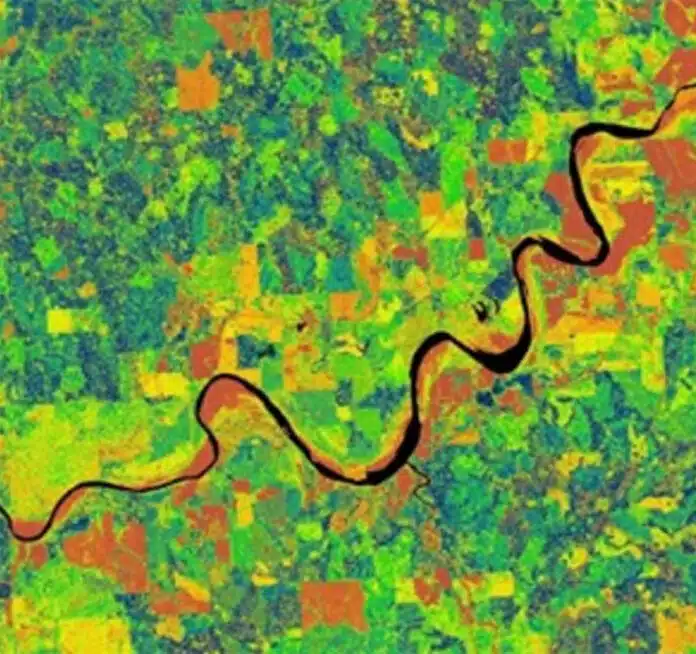
By Ashwini Sakharkar 24 Jul, 2024
Collected at: https://www.techexplorist.com/spaceborne-satellites-help-more-accurate-forest-monitoring/86454/
Assessing the health of forests requires accurate measurements, but existing methods are not always practical for large areas and different forest types. Space-based monitoring offers a promising solution.
Forests play a crucial role beyond being peaceful getaways. They act as carbon sinks, regulating water, providing habitats, and supporting a diverse range of terrestrial species.
Quantifying forest structure parameters, such as canopy height, canopy cover, and tree density, is crucial for understanding forest ecosystem functions. However, obtaining accurate measurements can be challenging. Researchers are seeking a more accessible method to acquire accurate and precise forest measurements instead of depending on costly and limited airborne laser scanning (ALS) measurements, which is the current widely used method.
Lidar technology, also known as LiDAR, is a cutting-edge remote sensing method that captures detailed three-dimensional information about the Earth’s surface. By utilizing satellites or high-flying aircraft, remote sensing allows for thorough scanning and monitoring of the Earth’s physical characteristics. While airborne lidar is effective in measuring canopy height, its limitations in spatial coverage and cost make it less than ideal.
To address these shortcomings, spaceborne lidar presents a promising alternative with comparable accuracy and increased flexibility. The proposal to utilize the ICESat-2 spaceborne satellite for large-scale canopy height estimation is a significant leap towards reducing reliance on less versatile and costly technology, ultimately enabling broader access to crucial forest structure information.
ICESat-2 is equipped with state-of-the-art laser technology to accurately map the Earth’s surface, including measurements of elevation and vegetation height. Its ability to measure canopy heights with a strong beam at night is highly consistent with airborne lidar data. ICESat-2 demonstrates exceptional accuracy in analyzing dense evergreen forests.
“The ICESat-2 satellite has proven to be a reliable and effective tool for measuring canopy height on a global scale, but a careful selection and calibration over the ICESat-2 dataset is necessary for large-scale canopy height estimation,” said Nitant Rai, a former graduate student at Mississippi State University and lead author of the study.
By further advancing ICESat-2 and integrating it with other high-resolution remote sensing methods, researchers aim to achieve comprehensive, detailed estimations of canopy coverage and forest structure, enabling continuous monitoring of structural changes over time. ICESat-2 shows great potential in tracking forest recovery and detecting deviations that could indicate future forest health issues.
“This study also demonstrates the importance of integrating diverse data sources for forest structure monitoring and highlights the applicability of ICESat-2 in understanding forest structure on a global scale,” said Qin Ma, a professor from Nanjing Normal University and corresponding author of the study.
Monitoring and gathering this type of data is crucial for effectively overseeing forested areas, enabling us to track changes in carbon storage and much more. By expanding our surveillance efforts worldwide, we can promptly address threats such as deforestation, ultimately contributing to the preservation of vital ecosystems. These ecosystems are essential for the safety and longevity of both their inhabitants and the surrounding areas.
Journal reference:
- Nitant Rai, Qin Ma, Krishna P. Poudel, Austin Himes, Qingmin Meng. Evaluating the Uncertainties in Forest Canopy Height Measurements Using ICESat-2 Data. Journal of Remote Sensing, 2024; DOI: 10.34133/remotesensing.0160

Leave a Reply